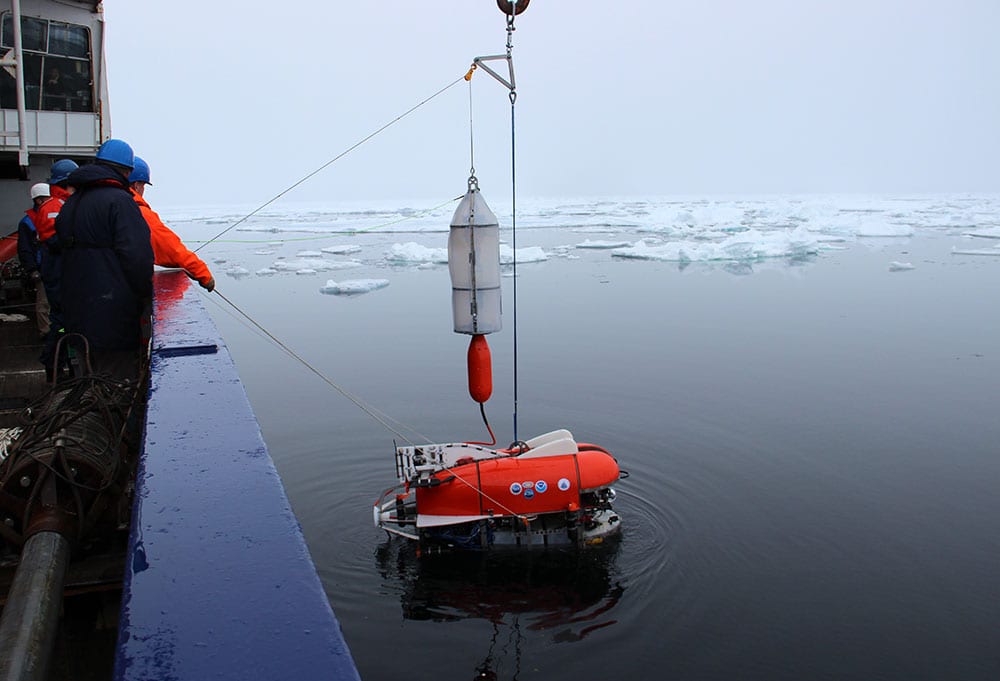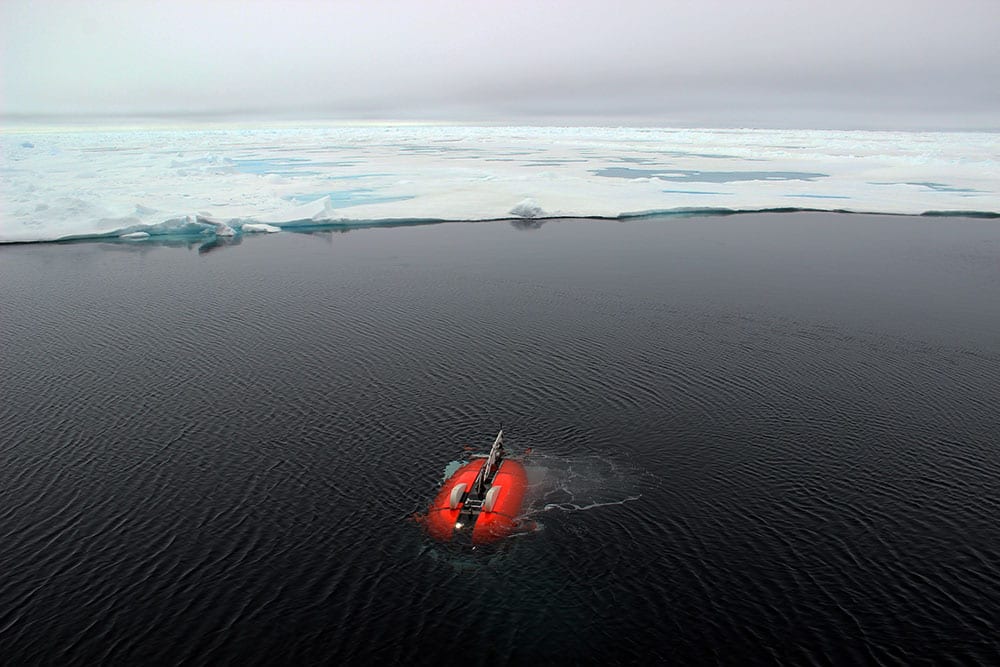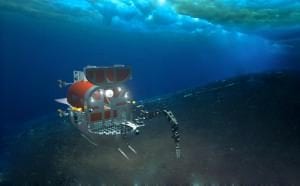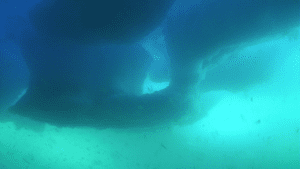HROV Nereid Under Ice
Ice-covered seas such as the Arctic and the water near calving glaciers are an important, and often dangerous, part of the ocean that require highly specialized tools to explore and sample—something that has hampered study. Arctic sea ice, for example, is disappearing rapidly, opening the ocean below to the sun's heat and to increased human activity such as shipping and fishing. The under-ice environment is home to a unique ecosystem of plants and animals that forms a critical link in the Arctic food web. The hidden, underwater topography of ice is a difficult variable to measure but informs the efforts of climate modelers to forecast the future of the Arctic and Antarctic, as well as the changes in store for places closer to home.
Traditional remotely operated vehicles have so far been limited in their ability to explore these regions because they rely on heavy, armored tethers that limit the vehicle's ability to move away from ice disturbed by an ice breaker, to maneuver close to the rapidly changing environment at the foot of a glacier, or to maneuver on the sea floor independently of ice moving at the surface. Engineers at WHOI recently applied technology to this challenge that originally permitted the hybrid remotely operated vehicle (HROV) Nereus to reach the deepest parts of the ocean. Instead of making a vehicle capable of reaching great depth, however, they aimed at designing something that could travel great distances, while still remaining under real-time human control.
HROV Nereid Under-Ice is built to travel up to 40 kilometers (25 miles) laterally underwater, rather than the few hundred feet of a typical ROV, while still receiving control signals and transmitting data, including high-definition video, back to operators located on a ship via a hair-thin fiber optic tether. Instead of receiving power from this tether, as a traditional ROV does, Nereid Under-Ice carries its own battery power on board, which makes the tether much lighter and smaller. In addition, it also carries a full suite of acoustic, chemical, and biological sensors for investigating the underwater environment, as well as a seven-function electro-hydraulic manipulator arm. The vehicle is rated to dive 5,000 meters (16,400 feet) beneath the surface to sample or survey the mid-water or sea floor.
Additional Information
» Technical Overview
» Specifications
» Publications
» Team
See Also
Trial By Ice: A next-generation ocean robot explores the Arctic's deepest secrets.
The American Society of Mechanical Engineers - May 2016
Adventure Under Ice
John Hopkins Whiting School of Engineering Magazine - Winter 2015




